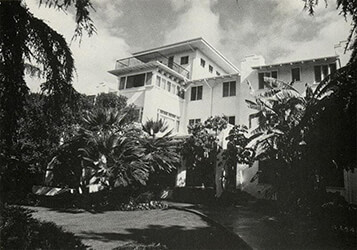
Ancient Rome, during the time when Christ was born, counted already one million inhabitants. Compare that to Los Angeles: in 1860 it was a home for only a handful of 4,500 souls’s not much more than a village. 13 years before Yogananda’s birth, in 1880, Los Angeles (“the Benares of America”) was still a relatively small town of about 12,000. But America was growing dynamically. It was a young culture, full of vigor. Yogananda loved its pioneering spirit: “Eventually? Eventually? Why not now!” With that expansive spirit, he knew his message could grow.
When Yogananda was a boy of 7, in 1900, LA’s population had already grown to 100.000. Still not all that big, one might observe. True: and that is the reason why at that time Mount Washington was nothing but a bare mountain, inhabited only by squirrels, quail, rabbits and a few hikers and picnickers. The latter came because of the fantastic view, for which the mountain was well-known.
It was that very view which inspired real estate agents to build a stately hotel on top of Mount Washington, 940 feet high. Their problem was that there was no road, no way to get up there. And the hill was quite steep. So a cable car had to be built first, which was inaugurated in 1909.
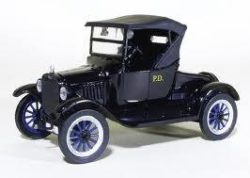 At the same time a road was carved out of the mountainside, which led to the top. Of course in those days cars were relatively rare, and were not built for mountains at all. Here is a picture of a typical car of the time.
At the same time a road was carved out of the mountainside, which led to the top. Of course in those days cars were relatively rare, and were not built for mountains at all. Here is a picture of a typical car of the time.
For more detailed information about the Mount Washington cable car and more, visit www.erha.org/washington.htm.
The construction of the Mount Washington Hotel itself was finished by January 1910, during the year when Yogananda met his guru, Sri Yukteswar. By that time the LA population had already risen to a proud 320,000.
When in 1925 Yogananda became the owner of the spacious Mount Washington Hotel, he himself was still a somewhat young man of 32 years. The hotel, however, was much younger, only 15 years old. Still, during its first few years of existence it had already lived through many adventures, many changes, and many definite surprises, as we will see.
To complete the population picture: In that year of 1925, when Yogananda established his headquarters on top of Mt. Washington, the LA population had already risen to about one million inhabitants. When Yogananda passed on, in 1952, the number had risen to about two million, meaning about two million more than a mere 100 years earlier.
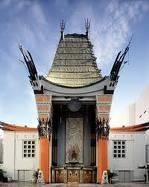 The “Mount Washington Hotel” was designed to be a mountaintop resort, with 14 beautifully landscaped acres. The elegant 3-story structure was constructed by “Meyer & Holler,” the same company which in 1927 also built Mr. Grauman’s famous Chinese Theatre in LA. (A truly exotic building, especially for those early years, as one sees on the photo.
The “Mount Washington Hotel” was designed to be a mountaintop resort, with 14 beautifully landscaped acres. The elegant 3-story structure was constructed by “Meyer & Holler,” the same company which in 1927 also built Mr. Grauman’s famous Chinese Theatre in LA. (A truly exotic building, especially for those early years, as one sees on the photo.
Interestingly, the Mount Washington Hotel too had an Eastern touch to it, even before Yogananda acquired it: it had a beautiful Japanese garden in front of it, as well as a roof garden. In the original plans, this Japanese garden was to include an observation tower (Yogananda, as you will see, later had the same plan), offering a spectacular view of the beautiful mountains, valleys and the sea. The Mount Washington Hotel, incidentally, was built in the so-called “missionary style.” Its mission, however, was very different from what the Western world had seen so far: Self-realization, the discovery of man’s inner divinity.
Mr. Grauman and Yogananda, it may be added, were not only connected through their beautiful and special buildings. They became acquainted. Yogananda invited Mr. Grauman to visit Mt. Washington as a guest of honor for a feast for Indian athletes, in 1932. Yogananda, in turn, gave talks at his Chinese Theatre.
The Mount Washington Hotel had 18 rooms. Today it is fun to still see the original numbers on the doors. Each room had a private bathroom, which was quite extraordinary for the time, and proofed a great treat for future nuns who would later occupy these quarters. The monks were living in the basement, where employee rooms had been built, using a common bath.
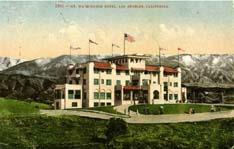
Tennis was a most popular sport at the turn of the Century. Thus two tennis courts soon graced the property. Tournaments of famous players were held there. Yogananda later used to play there too, even quite well, as he was an extremely fast runner.
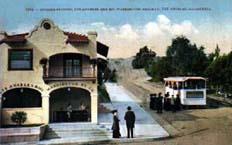 The cable car (“incline railway”) brought people up to the hotel. One could also reach it by automobile, but not all of them even managed the steep upward climb- some boiled over. The old cable car powerhouse was later converted into monks quarters, and today serves SRF as computer offices.
The cable car (“incline railway”) brought people up to the hotel. One could also reach it by automobile, but not all of them even managed the steep upward climb- some boiled over. The old cable car powerhouse was later converted into monks quarters, and today serves SRF as computer offices.
The hotel, after its opening in 1910, soon turned out to be a huge success: it became a favorite hangout spot for the rich. Mt. Washington became an exclusive and highly desirable hilltop residential site. It offered a fine dining room, with food cooked by gourmet cooks. Yogananda later became a worthy heir to that fine kitchen: he was a marvelous cook himself, inventing many tasty recipes and finding new ways of cooking, slicing, preparing. Everything in the hotel was of high quality: velvet carpets, brass beds, furniture of oak and walnut. On weekends usually all rooms were rented out.
So well did the hotel business go that in September 1911, the LA Times stated that the hotel planned to add an additional 100 rooms and 50 baths! That plan, however, was never carried out. Too bad. Yogananda might have enjoyed the many extra rooms, and especially the monks.
It was also reported that 3,500 passengers were carried to the summit on a single Sunday afternoon (imagine the crowds!). The cable-car station down on Marmion Way was so busy that a refreshment stand was opened in the depot. It appears that Mt. Washington had truly become the ‘in place’.
The building lots on Mount Washington, too, got a big boost: they sold increasingly well. Beautiful and costly homes began to spring up all over the mountain, where not a single house had been seen just a few years ago.
Most of all there was one fascinating reason why the Mt. Washington Hotel became so attractive: The 18 hotel rooms were being used by celebrities, such as….. lo and behold… Charley Chaplin, who always stayed at the hotel while making a film at the Sycamore Grove studios. Other stars of screen and sport also took rooms there. It became a gathering spot of the famous. Small wonder that people flocked in like birds. Did Yogananda know that his beloved headquarters once housed a Charley Chaplin, and all those other stars? Well, he must have known. Did he care? Did the nuns have fun at the thought that some movie star had once occupied their room?
But alas, Mount Washington’s early glory was soon put to a rough test: hard times began. The film stars left the Sycamore Grove Park, moving to Edendale, and then to Hollywood: it had a devastating effect on the Mt. Washington Hotel. Once the stars had left, less and less visitors came to pay Mt. Washington a visit. Another problem was that the automobile was coming within the financial scope of increasing numbers of people. Car owners soon discovered the pleasure of traveling to more distant destinations. Mount Washington Hotel became more and more forgotten.
In January 1919 the Mt. Washington cable car was actually closed down. With great effort the inhabitants tried to keep it going. But to no avail. The whole Mt. Washington mountaintop was now without any public transportation. Monastic life on Mt. Washington thus began quite involuntarily: without service by the cable cars, the entire top of Mt. Washington was completely isolated from the outside world. Automobiles could still drive up the steep dirt road, but it often defied the capabilities of those early vehicles. And without a car, Mount Washington could only be climbed by a hefty walk.
Incidentally, the cable-car tracks, which lead up to the hotel were only taken away in 1930. Thus Yogananda and his little early band enjoyed this “souvenir” of the old tracks for five years.
Lots of advertisement ensued to save the once famous Mt. Washington Hotel, but again to little avail. It suffered a steady decline, and finally had to close, sometime during the summer of 1921. By then Yogananda had reached America’s shores, knowing that one day he would find the building of his visions.
Meanwhile in 1922 a Military School occupied the hotel: “An ideal school for boys and young men in an ideal location. From grammar school through high school. Personal supervision under high-class instructors. Individual instruction if necessary. On a 20 acre campus.” The school didn’t last, but Yogananda was soon to pick up the idea again.
In 1923 the hotel became the Goodrich-Mount Washington Emphysema Hospital. But the respiratory hospital closed in late 1924 or early 1925. The art of breath would not be lost there, however: Yogananda had a lot to say on that specific topic.
Just then, in January 1925, as if by divine timing, Yogananda arrived in Los Angeles. (In 1924, Yogananda had started his maiden cross-country lecture “campaign”, after having stayed in Boston for his first three years in America.) Looking for a place for his headquarters, he finally found and bought the Mount Washington Hotel.
At that time it was full of vagrants, and many of the windows had been broken. The place had become almost a wilderness.
It had its good side, however: Yogananda acquired the hotel for a very reasonable price, $45,000. Of course the help of Divine Mother’s loving hand was involved! The story of how he obtained it is beautifully described by Swami Kriyananda in “The New Path.”
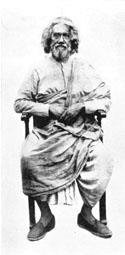 It was a major step for Yogananda’s mission. He rushed to send photos of his new headquarters to his guru, Sri Yukteswar. In his Autobiography he wrote:
It was a major step for Yogananda’s mission. He rushed to send photos of his new headquarters to his guru, Sri Yukteswar. In his Autobiography he wrote:
“With the help of large-hearted students, by the end of 1925 I had established an American headquarters on the Mount Washington Estates in Los Angeles. The building is the one I had seen years before in my vision at Kashmir. I hastened to send Sri Yukteswar pictures of these distant American activities. He replied with a postcard in Bengali, which I here translate:
11th August, 1926
Child of my heart, O Yogananda!
Seeing the photos of your school and students, what joy comes in my life I cannot express in words. I am melting in joy to see your yoga students of different cities. Beholding your methods in chant affirmations, healing vibrations, and divine healing prayers, I cannot refrain from thanking you from my heart. Seeing the gate, the winding hilly way upward, and the beautiful scenery spread out beneath the Mount Washington Estates, I yearn to behold it all with my own eyes.”
Interestingly, the Mount Washington headquarters and Yogananda’s magazine “East-West” were born together: they are twins, so to speak. In the very first issue of East-West, Nov. Dec. 1925, Yogananda announced the formal opening of his headquarters in October 25, 1925. Actually, and maybe significantly, he had named it: “Mount Washington Educational Center”‘s Headquarters of Sat-Sanga and Yogoda.
Here is what the announcement said: “”¦The main object and desire of Swami Yogananda’ s heart is to have it made possible for him to establish a YOGODA-HOW-TO-LIVE-SCHOOL on Mount Washington for training children along the lines of YOGODA (harmonious development of all human faculties) and SAT-SANGA (Fellowship with Truth), aiming at similar physical, mental and especially spiritual results.
Besides the YOGODA-HOW-TO-LIVE-SCHOOL, Swami Yogananda also plans to offer to adult students, Courses in Psychology, Philosophy and all branches of Scientific Spiritual Realization, and also Correspondence Courses in the above subjects. Eventually the Center plans to have a Taj or Tower, a large Swimming Pool, a Library, Printing Press, and a Museum containing rare and interesting objects, especially from the Orient. Through the grace of the Great Divine Power, may this Center on Mount Washington become a magnet of world-wide interest and attraction, and be a Mecca for those who are spiritually hungry.”
Yogananda’s “main object and desire” for Mount Washington, then, was to establish a school for children. Is that surprising? Probably, because nowadays we would not easily hear that piece of information: we hear that Yogananda came to create a monastic order. But this early text seems to indicate that Yogananda saw his mission in the West in quite broad terms, of which a monastic order was only one (if central) part. Fun also to hear about the large swimming pool. That plan was actually fulfilled later: He had one built at Encinitas (still there), and one at 29 Palms.
Let’s digress here for a moment. Trying to grasp the main directions of Yogananda’s work throughout his life, one may see the following phases:
- In India he started his mission by heart building a school, offering a balanced education to children, with spiritual practices as a main feature.
- In America, after teaching in Boston for 3 years, a “main object and desire” was to establish a school, at Mount Washington. Swami Dhirananda, a close friend from India, was called to be in charge of Mount Washington, whenever Yogananda was touring. Yogananda announced in the first East-West magazine: “Dhirananda will conduct a Sunday School class for boys and girls every Sunday morning at Mount Washington, and attend to the work of the Yogoda Correspondence Course, as well as carry on further the spiritual work as it develops.” Besides the school, Yogananda’s other goal of course was the spiritual training of adults.
- Dhirananda’s (a high soul, of course) departure in 1929 was a great blow to Yogananda, and actually seems to have changed the direction of his work: from then on, one doesn’t read much more about schools. Instead, the monastic era started. Yogananda’s monastic pillars arrived: Durga Mata (1929), Daya Mata (1931), and Gyanamata Mata (1932). “Yogoda Satsanga” became “Self-Realization Fellowship” in 1934, and in 1935 was registered as a church. Yogananda gave his heart and soul to those who wanted to live for God alone.
- After returning from India, Yogananda often stayed in Encinitas, working on his writings. A new interesting direction crystallized: he began to talk and write frequently about his ideal of a “Golden World City,” or “World-Brotherhood Colonies.” He started such a one for families in Encinitas (with opening talk and all), and included Colonies in his “Aims and Ideals.” It was, of course, not a change of direction concerning the monastic life, which he tried to strengthen in every possible way. It was a parallel vision. He wrote in 1946: “Dear Father, bless us with the physical power by which we can control constructively atoms and the forces behind it, bless us that we establish the temple of atomic control in the souls of men, and in Self-Realization, and in our Golden World City.”
- After Yogananda’s passing, the monastic life alone remained.
Back to Mount Washington, Yogananda’s headquarters:
In August 1927, in East-West, the first fruits of Mount Washington’s labors were happily published. Note the following numbers – that’s a lot of people. If they are accurate, they would be quite a challenge even for today. Nowadays, of course, no public classes and services are held at Mount Washington anymore. Mount Washington today is exclusively the SRF administration center.
- Total attendance in lectures, weekly classes, special classes conducted at Mount Washington Education Center: 20,000.
- Total Sunday School attendance: 4,500. Children 1,500; Adults 3,000
- Personal interviews to Yogoda students and non-students, helping them with advice and prayer concerning personal problems: 2,500
- Prayers, help and written instructions on physical, domestic, moral and spiritual problems given students and non-students (by mail): 4,000
- Inquiries received and answered relating to Yogoda Correspondence Course: 4,000
- Calls made upon sick people in Los Angeles hospitals and homes: 500
- Also lectures given before well-known clubs, churches, civic organizations and on the radio. Numerous plays, musical recitals, holiday parties and other entertainments were also given.
In short: they were extremely active!
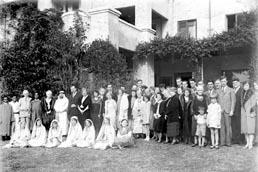 Here is a photo of that time, showing Christmas 1930 at Mount Washington.
Here is a photo of that time, showing Christmas 1930 at Mount Washington.
Yogananda stated that he has meditated on every spot of the Mount Washington grounds. And indeed the meditative visitor easily feels his vibrations alive and present there. It certainly remains a blessed pilgrimage spot. One wonders how many divine ecstasies have happened on these sacred grounds.
To see “modern” Mt. Washington, 80 years after its birth, with visiting hours, visit the SRF website: www.yogananda-srf.org
Of course many more stories could be told about Mount Washington:
- How rooms were rented out to the public in the early days, with ads in East-West.
- The very few early disciples living there, and their way of living together; Yogananda was mostly gone on his “campaigns;” the painful troubles that followed.
- The incredible noise of the early Mt. Washington printing press.
- The various special plants and trees Yogananda planted on the grounds.
- Yogananda’s long financial struggles to pay off the two mortgages on the Mt. Washington property, and Rajarsi’s timely help in 1932, paying off the entire sum.
- The yearly long blissful Christmas meditations at Mount Washington, where Christ appeared many times, starting in 1931.
- The birth of the monastic order at Mount Washington in 1931 and Yogananda’s “Summer School” programs in 1932.
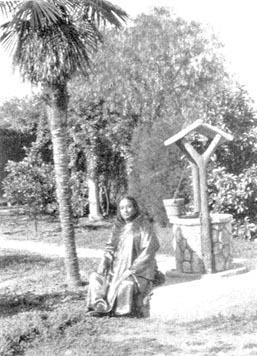 The addition of the Wishing Well (1934), and the Temple of Leaves;
The addition of the Wishing Well (1934), and the Temple of Leaves;- The tomato planting on the Mount Washington grounds, during times of financial hardship.
- The many famous people (musicians, stars, politicians, spiritual teachers) who honored Mt. Washington with their visit through the years.
- Adjusting the top floor to give Rajarsi his private quarters.
- How Mt. Washington in a way remained a “hotel” – disciples coming and going, not understanding what they had.
- The first-ever convocation at Mount Washington, in 1950.
- The relationship with Mt. Washington neighbors during Yogananda’s life.
- The buildings which were later added to the headquarters.
- The plan to build a huge Mausoleum on the grounds, for Yogananda’s (still incorrupt?) body.
But as everyone can see, all this would take us way too far. This chapter is already long as it is. Maybe it’s best to finish instead with the poem Yogananda wrote for his beloved Mount Washington, his “life’s dream,” again published in his first East-West magazine, Nov.-Dec. 1925. Note the “Nippon (Japanese) camphor trees;” his dream to promote at Mount Washington the union “in deepest friendliness” of all churches, mosques, temples, so urgently needed today; and his repeated use of the word “freedom!”
Life’s Dream
Dedicated to Mount Washington Educational Center
The summer-East
And the wintry West
They say — but Mount Washington
Named rightly after that pioneer
Of Freedom’s great career,
Thou dost stand, the snowless guardian Himalaya
Of the angel land in perpetual green regalia.
Nippon’s camphor trees and perfumed wisteria and smiling roses
Palm, date and well-beloved spicy bay leaves of Hind stand close,
With endless scenic beauties
Of ocean, canyon, setting sun, moon-studded sky
And nightly twinkling cities
To declare
Thy ever-changing beauty.
On thy crown thou shalt newly wear
A priceless starry-school which in all future near
Shall draw the lost travelers of the East and West
To find their goal and one place of rest.
Here one path
Shall merge with all other paths.
Here the love of earthly Freedom’s paradise, America,
Shall blend forever with spiritual Freedom’s paradise, India.
Here church in deepest friendliness shall all other churches meet.
Here the temple the mosque shall greet.
Here the long-divorced matter-lawsv
Will wed again in peace the spirit laws.
Here all minds will learn that true Art
Of living life and the way to start
Straight to the One great place
Where all must meet at last.
Jehovah! This is the land of solace
Where my life’s dream in truth reappears!
